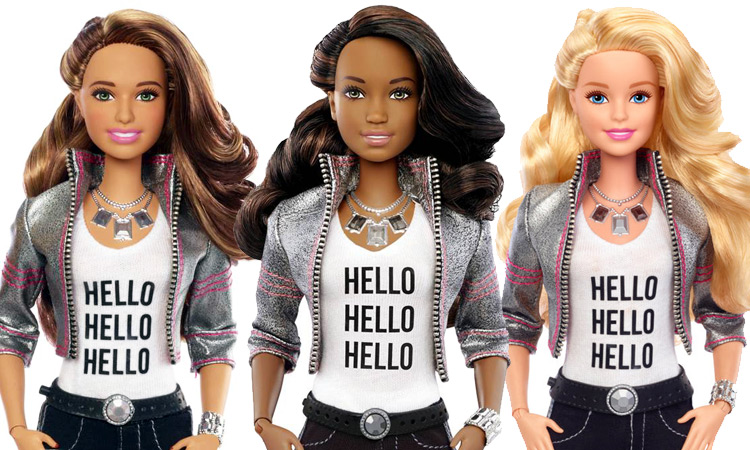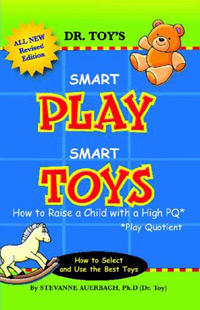 Toy stores and thousands of little girls are beside themselves with excitement. The reason: a new incarnation of the legendary Barbie doll. Say “hi” to Hello Barbie, the doll equipped to engage in two-way conversation. Packed within the legendary figure of this plastic heroine is the latest in high tech, including voice recognition software, a WiFi connection and even space in the Cloud where conversations are recorded and can be referred to in future chats.
Toy stores and thousands of little girls are beside themselves with excitement. The reason: a new incarnation of the legendary Barbie doll. Say “hi” to Hello Barbie, the doll equipped to engage in two-way conversation. Packed within the legendary figure of this plastic heroine is the latest in high tech, including voice recognition software, a WiFi connection and even space in the Cloud where conversations are recorded and can be referred to in future chats.
While some may herald a conversational doll as a wonderful leap forward in the toy universe, many are voicing concerns. This type of doll can’t be spontaneous, since it can only utter prerecorded phrases. This limits the range of the conversation, thus restricting the flights of imagination that are a hallmark of playing with dolls. (Imagine if, after every stroke of a crayon on paper, the paper responded by rendering another part of the picture. The result may be a thing of beauty transcending the child’s drawing skills, but it will greatly dilute the creative expression of a young artist.)
Of course, girls will still have other non-talking dolls and stuffed animals that allow a bigger outlet for their imaginations. But as history shows, interactive toys and games are incredibly addictive. A conversing doll could easily relegate her voiceless peers to the bench in the playtime starting lineup.
 A conversing doll also compromises the value of doll playing as a way for children to explore their own emotions and act out frustrations in a safe way. This could impair learning of how to handle one’s own feelings—even how to overcome shyness and deal with rejection. According to Stevanne Auerbach—one of the nation’s leading professionals on children’s play and educational toys, and the author of Smart Play Smart Toys: How to Raise a Child with a High PQ (play quotient)–a child’s imagination should be the driving force behind any interaction with a doll, without interference from other sources. “Dolls provide the child with an essential chance to communicate at their own level, experience emotions and express their own creativity, and not be programmed by technology that does not guarantee that it provides solid value,” she told the Kansas City Star.
A conversing doll also compromises the value of doll playing as a way for children to explore their own emotions and act out frustrations in a safe way. This could impair learning of how to handle one’s own feelings—even how to overcome shyness and deal with rejection. According to Stevanne Auerbach—one of the nation’s leading professionals on children’s play and educational toys, and the author of Smart Play Smart Toys: How to Raise a Child with a High PQ (play quotient)–a child’s imagination should be the driving force behind any interaction with a doll, without interference from other sources. “Dolls provide the child with an essential chance to communicate at their own level, experience emotions and express their own creativity, and not be programmed by technology that does not guarantee that it provides solid value,” she told the Kansas City Star.
Pros and cons of interactive toys with “intelligence”
Interactive toys and media can be boons to learning, but their effects on emotions and creativity are more iffy. Young children are a special concern, because their minds and emotions are still in an early developmental stage. It’s hard to know the long-term impact of toys equipped with artificial intelligence, since they have no equivalent in previous eras.
There’s also the problem of forming emotional bonds with toys that possess human qualities, such as the ability to have a conversation. Dr Kaveri Subrahmanyam, associate director of the Children’s Digital Media Center in Los Angeles, feels that this type of emotional bond could take away time spent with real people, which could thus interfere with the “normative development of empathy.” While there’s nothing new about kids bonding with people that aren’t real—such as characters in television shows or super heroes in comic books—a 3-D doll that can talk and also “remember” who you are takes that kind of bond to an unprecedented level.
 Might some little girls favor an artificially intelligent, responsive doll over human friends? Young children often find it difficult to tell the difference between what’s real and not real, which could allow them to make comparisons between the doll and actual children. This is a disturbing notion, taken to its extreme in the 2013 movie Her when Joaquin Phoenix’s character falls in love with a smartphone operating system. It’s only a movie, but should serve as a warning about what can happen when technology gains a more intimate connection with humans.
Might some little girls favor an artificially intelligent, responsive doll over human friends? Young children often find it difficult to tell the difference between what’s real and not real, which could allow them to make comparisons between the doll and actual children. This is a disturbing notion, taken to its extreme in the 2013 movie Her when Joaquin Phoenix’s character falls in love with a smartphone operating system. It’s only a movie, but should serve as a warning about what can happen when technology gains a more intimate connection with humans.
For the meantime, I think we’re a long way from Hello Barbie dolls networking with each other and enlisting their real-life playmates to help them take over the world.
To find out about Rose’s thoughts on how to live a happier life, click here


